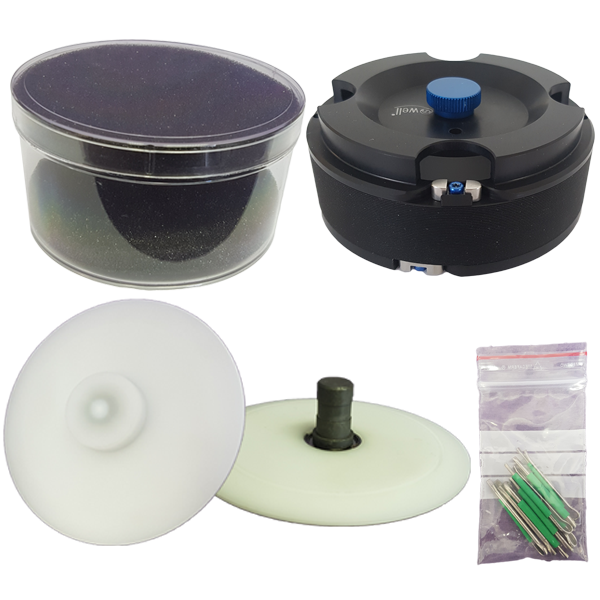The diamond wire
The patented WELL process consists of a stainless steel wire from Ø 0.10mm to Ø 0.7mm in which diamond particles of different granulometries are encrusted, thus guaranteeing a superior cutting quality and an optimal service life. The WELL process does not use any binder (chemical/ galvanic) that can cause pollution on the sample, and the operator can therefore use the machine in complete safety.
The available wire diameter/diamond grain size ratios are as follows:
- 0,10 mm / 10 µ
- 0,13 mm / 20 µ
- 0,17 mm / 30 µ
- 0,22 mm / 40 µ
- 0,30 mm / 40 µ
- 0,30 mm / 60 µ
- 0,35 mm / 60 µ
- 0,50 mm / 60 µ
- 0,70 mm / 60 µ
The applications
Wire saws are used in many fields in quality control, failure analysis and materials research, including metallography, electronics, crystallography, dentistry, geology, archaeology, electron microscopy, etc. The wire saw proves to be an extremely versatile tool in a research laboratory.
Les avantages
Cutting is effortless on the workpiece and does not cause heating or structural changes, as the cutting feed rate depends on the nature and hardness of the material. The mechanical deformation of the workpiece during cutting is minimal, due to the small wire size, the choice of the diamond grain size and the low pressure force :
- The wire cutting technique is material-saving: the small wire diameter minimizes the width of the cutting line and implies a low loss of material, which can be very important when cutting rare, polluting and expensive materials.
- The cut is smooth and the edges have sharp angles even on hard and brittle materials.
- The cuts are highly accurate in flatness and parallelism, allowing the production of thin blades.
- The cut gives a very fine surface finish which reduces the final polishing time when it is necessary.
- Specimen fixation is easy and requires only gluing or light clamping.
- The process does not require a cooling system.
- The liquid used allows the cleaning of the wire. The reciprocating movement avoids fouling.
- In some cases, cuts can be made dry.
- The cutting depth of the wire can be adjusted, which is ideal for approaching a defect.
- The wire saws are autonomous, silent machines that can be used continuously and safely by the operator.



